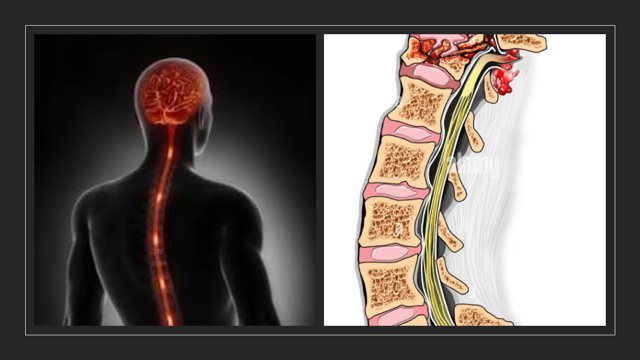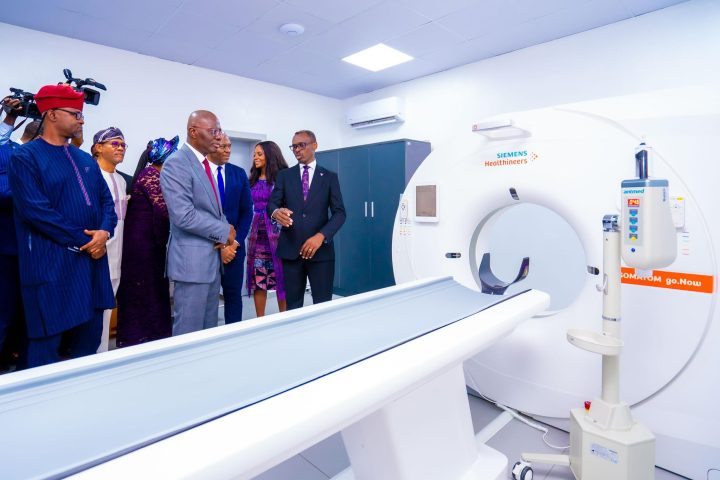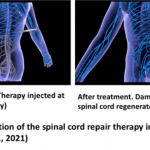And Jesus said to the paralytic, “I say unto thee, arise and take up thy bed, and go thy way, into thine house.” And immediately he arose, took up the bed, and went forth before them all; in so much that they were all amazed, and glorified God, saying, “We never saw it on this fashion.”
This happened more than 2000 years ago, and since then nobody has been able to authentically recreate that Biblical miracle.
Join our WhatsApp ChannelThe actor, Christopher Reeve of the “Superman movie” fame, had a ridding accident in 1995, which left him paralysed. In an interview in 2001, he had this to say, “I know there’s a cure coming for the kind of injury that I have.” He campaigned tirelessly for stem cell research to help cure victims of paralysis, and died in 2004 without regaining the use of his paralysed limbs. And since his death, restoration of movements in paralysed limbs is still a mirage….well, until now.
The use of stem cells to repair damaged nerves in paralysed mice, and in the process restore some kind of movement has been shown to work. But replicating the same result with human subjects has proved impossible over the years.
Usually when one has an accident and the spinal cord is affected but not severed, the spinal cord over time and with the right treatment, could regenerate so that the person with the help of physiotherapy regains the use of the limbs. But if the spinal cord is completely severed, the person is irreversibly paralysed from the point of the injury. This is because the electrical signals from the brain that directs the activities of parts of the body below the point of injury is disrupted by the injury to the spinal cord. This does not mean that the spinal cord below the point of injury is totally useless. The chain of motor neurones of the injured spinal cord in most cases are still intact, albeit insufficient in number to allow movement. But if the neurones undergo excitation by electrical stimulation, for instance, the signals received from the remaining connections with the brain might be boosted enough to effect movement.
The focus in the past has been on repairing connections between the severed parts of the spinal cord using stem cell technology, for instance. But electrical stimulation has been discovered to assist in amplifying the messages sent to the injury site and in some cases, re-establish links. Therefore, many researches are now focused on how to restore some measure of movement in patients with spinal cord injuries. In this regards, there are many devices designed to apply electrical current to the neurones, which results in movement.
Last November, we discussed a new approach to healing spinal cord injury. Stupp and coworkers injected bioactive molecules at the site of the spinal cord injury in mice. The injected molecules caused tissue cells to repair and regenerate, leading to restoration of movement in the paralysed mice.
But science has since then progressed to the point that three paralysed people have been able to walk, swim and even pedal a bike! A paper published by Grégoire Courtine and coworker in February 2022 edition of Nature Medicine, described a new therapy called epidural electrical stimulation (EES) implant, which is designed to control movement by mimicking the signals the lower part of the severely injured spinal cord normally receives from the brain and upper part of the spinal cord.
The technique developed by Courtine and coworkers works like this: the size and position of the neurones in the spinal cord are mapped out using MRI (Molecular Resonance Imaging, to acquire the full image of the spinal cord) and computer tomography (to design a 3-D structure of the distribution of neurones of the spinal cord). The combination of the two techniques allows for modelling of the average spinal cord so that the areas of the spinal cord responsible for each movement during walking, e.g. flexing the hip or extending the ankle, are mapped out. Then electrodes of the epidural electrical stimulation device are strategically placed in those areas of the spinal cord involved in walking where they will exert maximum impact. The electrical current from the device is then fine-tuned according to each person’s requirement so that the spinal cord is stimulated at the right time and location to enable movements.
Twenty-seven people with spinal cord injuries but who still retain some measure of motor function below their injuries, underwent the modelling. Three people with various levels of spinal cord injuries had the epidural electrical stimulation device implanted in them. These included a person with no movement in his legs, another had his left leg completely paralysed; while a third person did have motor ability in his legs but was unable to lift his legs to walk.
The electrical current to each person was optimally tuned based on each person’s neurone layout and size. The amount and regularity of electrical stimulation is then controlled by the patients using buttons or computer tablets. The control could involve raising or lowering each leg, according to each person’s choice.
In just under twenty-four hours of activating the implant, all the three patients were able to recover a little movement in the severed parts of their body. The patients with support on their upper bodies, could use the treadmill, paddle a canoe and even cycle. However, the electrical stimulation of the neurones acted just like an amplifier and not really responsible for motion. Movement is only possible when the participants actually make the effort to walk by themselves.
The therapy lasted for five months at the end of which two of the participants were able to walk with the aid of crutches, and the most severely injured third participant could move his previously paralysed legs when lying down. This indicates that the connection between the brain and neurones is being strengthened by electrical stimulation.
Approval from the FDA (USA Food and Drug Administration) to include more people in the programme and carry out more tests, has been granted. The researchers are currently trying to make the system more user-friendly so that one can use a smartphone to control the electrical stimulation of the neurones. Alongside the use of smartphones to control the electrical impulses, the researchers are also testing implanting the device in the brain so that the patient can mentally control the electrical stimulation.
Tests carried out by the researchers in rodents did show that those with recent injury recover more movements if the stimulation is applied soon after the injury. In effect, greater successes are expected in people with more recent injury to their spinal cords than those with older injuries.
The use of such devices has seen improvements to lost functions resulting from spinal cord injuries, including bowel and bladder control, blood pressure, and improved sexual activity.
It is also hoped that loss of upper body movement due to spinal cord injury could be restored. This would be made possible for example, by gaining much deeper understanding of the working of the spinal cord-signalling process, especially given the fact that the aforementioned process strategically stimulates the neurones as against the previous method of continuous stimulation. Courtine in a paper published in Nature Neuroscience back in 2018, suggested that subjecting people with spinal cord injury to continuous stimulation might be hindering some residual neurological signals travelling from the legs back to the brain. Hence, his group opted for timed stimulation of the neurones rather than continuous stimulation.
However, the study is a welcoming news for many millions of people worldwide living with spinal cord injuries. With many more participants enrolled into the programme, it is hoped that the therapy would be perfected enough as to make it a mainstream therapy for treating people with spinal cord injuries.




















Follow Us